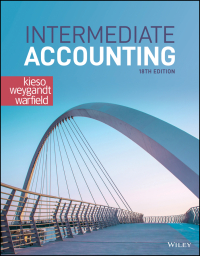Chapter 14 Questions:
- Question 14.1, a to d: Capital budgeting (16 points, 4 pts each a-d)
- Question 14.2, b to e (8 points)
- Question 14.3, a to d: Description of project breakeven and profitability measures (12 points)
- Question 14.4: NPV vs. IRR (5 points)
Chapter 14 Problems:
- Problem 14.5, a and b: Porter Memorial Hospital (24 points: part a 19 pts, part b 5 pts)
- Problem 14.6, a to c: Big Sky Health Systems, Inc. (10 points)
The requirement is to provide how we arrived at the solution. I have attached the pages of the text.
Problems 14.1. Winview Clinic is evaluating a project that costs $52, 125 and has expected net cash inflows of $12,000 per year for eight years. The first inflow occurs one year after the cost outflow, and the project has a cost of capital of 12 percent. a. What is the project's payback? b. What is the project's NPV? Its IRR? Its MIRR? c. Is the project financially acceptable? Explain your answer. 14.2. Better Health, Inc., is evaluating two investment projects, each of which requires an up-front expenditure of $1.5 million. The projects are expected to produce the following net cash inflows: Year Project A Project B 1 $ 500,000 $2,000,000 2 1,000,000 1,000,000 3 2,000,000 600,000A Chapter 14: The Basics of Capital Budg a. What is each project's IRR? b. What is each project's NPV if the cost of capital is 10 percent? 5 percent? 15 percent? 4.3. Capitol Healthplans, Inc., is evaluating two different methods for providing home health services to its members. Both methods involve contracting out for services, and the health outcomes and revenues are not affected by the method chosen. Therefore, the incremental cash flows for the decision are all outflows. Here are the projected flows: Year Method A Method B ($300,000) ($120,000) (66,000) (96,000) 2 (66,000) (96,000) 3 (66,000) (96,000) (66,000) (96,000) 4 (66,000) (96,000)(96,000) a. What is each alternative's IRR? b. If the cost of capital for both methods is 9 percent, which method should be chosen? Why? 4. Great Lakes Clinic has been asked to provide exclusive healthcare services for next year's World Exposition. Although flattered by the request, the clinic's managers want to conduct a financial analysis of the project. There will be an up-front cost of $160,000 to get the clinic in operation. Then, a net cash inflow of $1 million is expected from operations in each of the two years of the exposition. However, the clinic has to pay the organizers of the exposition a fee for the marketing value of the opportunity. This fee, which must be paid at the end of the second year, is $2 million. a. What are the cash flows associated with the project? b. What is the project's IRR? c. Assuming a project cost of capital of 10 percent, what is the project's NPV? d. What is the project's MIRR? 1.5. Assume that you are the chief financial officer at Porter Memorial Hospital. The CEO has asked you to analyze two proposed capital investments-project X and project Y. Each project requires a net investment outlay of $10,000, and the cost of capital for each project is 12 percent. The projects' expected net cash flows are as follows:apenski's Healthcare Finance Year Project X Project Y ($10,000) ($10,000) 0 6,500 3,000 N H 3,000 3,000 3 3,000 3,000 1,000 3,000 4 Do bord of deco Isanomot a. Calculate each project's payback period, net present value (NPV), and internal rate of return (IRR). b. Which project (or projects) is financially acceptable? Explain your answer . 14.6. The director of capital budgeting for Big Sky Health Systems, Inc., has estimated the following cash flows in thousands of dollars for a proposed new service: Year Expected Net Cash Flow O ($100) 70 N 50 20 ed baroda bordom The project's cost of capital is 10 percent. a. What is the project's payback period? b. What is the project's NPV? c. What is the project's IRR? Its MIRR? 14.7. Michigan Health










